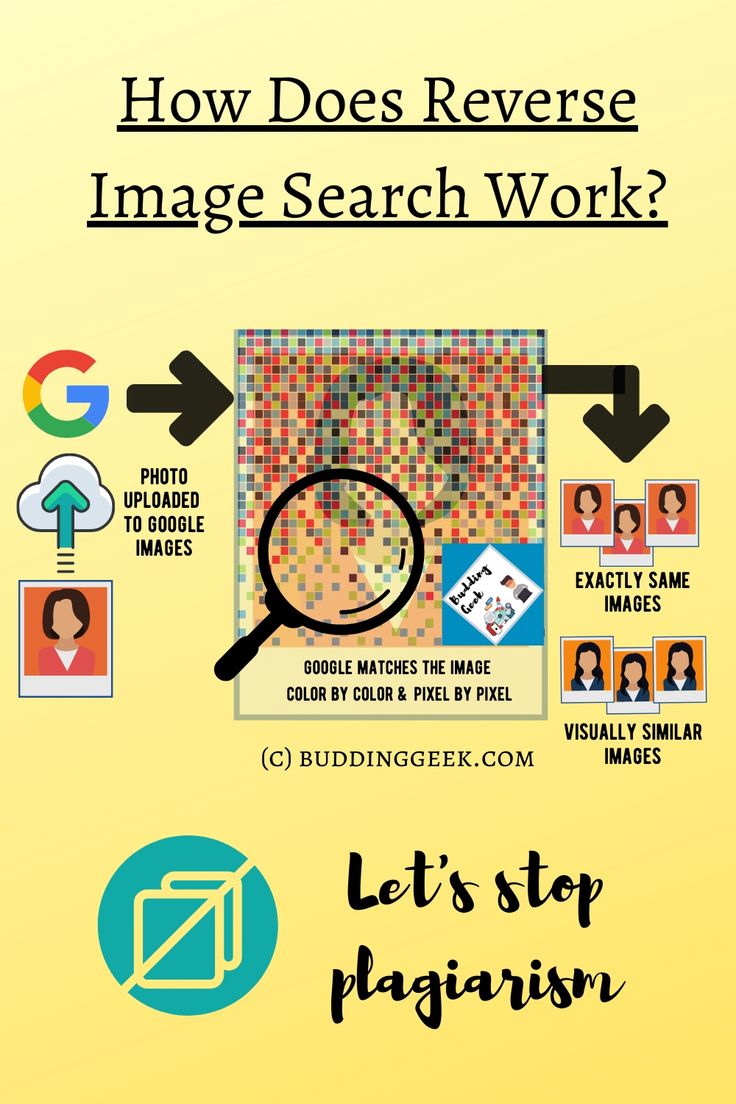Ever come across an image online and wondered where it originated from or if similar images exist elsewhere? That’s where reverse image search comes in handy! Instead of typing keywords, you simply upload or link to an image, and the search engine finds matches or visually similar pictures. This technique is super useful for verifying image authenticity, discovering higher resolution versions, tracking image usage, or finding the original creator. Whether you’re a photographer, a marketer, or just a curious internet user, mastering reverse image search can save you time and help you navigate the visual web more confidently.
Understanding Shutterstock and Its Image Library

Shutterstock is one of the biggest names in the world of stock photography and images. It offers millions of high-quality photos, illustrations, vectors, videos, and music clips across countless categories. From stunning landscapes and professional business shots to quirky icons and creative artwork, Shutterstock has something for everyone. The platform is used by marketers, designers, publishers, and content creators to find the perfect visual for their projects.
What makes Shutterstock stand out is its vast and diverse image library, which is constantly updated with fresh content from photographers and artists worldwide. Users can search using keywords, filters, or even upload images to find similar visuals. This is especially helpful when you want to find a specific style or ensure your image isn’t being used elsewhere without permission. Understanding how Shutterstock’s library works equips you with the knowledge to perform effective searches, including reverse image searches, which can help you verify images, find licensing options, or explore related content.
Preparing to Perform a Reverse Image Search on Shutterstock
Before you jump into performing a reverse image search on Shutterstock, it’s good to get everything ready. This way, the process will be smooth, and you’ll get the best results possible. Think of it as setting the stage for a successful search — just like preparing your workspace before starting a project.
First, you’ll want to have the image you’re curious about saved somewhere accessible. Whether it’s a screenshot, a photo from your device, or an image from a website, make sure it’s easy to find. If you’re using a mobile device, save the image to your gallery or camera roll. On a desktop, keep it in a folder where it’s easy to locate.
Next, check the quality of your image. Clear, high-resolution images tend to give better search results. Blurry or pixelated images might not produce accurate matches. If needed, you can try to find a better quality version of the image before searching.
It’s also a good idea to have your Shutterstock account ready, especially if you plan to explore licensing options or purchase images. Log in to your account beforehand to save time and avoid interruptions during your search.
Finally, think about the specific details you’re looking for. Are you trying to find similar images, identify the source, or see where else the image appears online? Clarifying your goal helps you focus your search and interpret the results more effectively.
Using Shutterstock’s Built-in Reverse Image Search Feature
Now that you’re prepared, let’s dive into how to actually perform a reverse image search using Shutterstock’s built-in feature. Shutterstock has made this process pretty straightforward, even for beginners.
First, go to the Shutterstock website and log into your account. Once you’re logged in, look for the search bar at the top of the homepage. Next to the search bar, you’ll see a small icon that looks like a camera — this is the reverse image search feature.
Click on the camera icon, and a pop-up window will appear prompting you to upload your image. Here’s what you’ll do next:
- Upload your image: Click on the “Upload Image” button and select the saved image from your device.
- Wait for processing: Shutterstock will analyze the image, which usually takes just a few seconds.
- View results: Once processed, Shutterstock will display visually similar images, related categories, or similar styles. It may also suggest keywords or tags associated with the image.
As you browse through the results, you can click on any image to see more details, licensing options, or to download if you have the rights. If you’re looking for images with a particular style or theme, these results can help you find exactly what you need more efficiently.
Some tips for getting the most out of Shutterstock’s reverse image search:
- Use clear images: Higher quality images yield more accurate matches.
- Experiment with different images: If your initial search doesn’t give what you want, try a different version or angle of the image.
- Refine your search: Use the keywords or tags suggested by Shutterstock to narrow down your options.
And that’s it! Using Shutterstock’s built-in reverse image search is a quick and effective way to find similar images, identify sources, or explore licensing options without leaving the platform. Happy searching!
Alternative Methods for Reverse Image Search on Shutterstock
If you’re looking to find similar images or trace the origin of a picture on Shutterstock but want to explore options beyond the standard reverse image search tools, you’re in luck! There are several alternative methods that can help you achieve your goal efficiently.
Using Shutterstock’s Built-in Search Features
Shutterstock itself offers some handy search tools that can aid your reverse image search journey:
- Keyword-Based Search: If you have a general idea of what the image portrays, try describing it with relevant keywords. You might find similar images or variations that match your interest.
- Visual Similarity Filters: When browsing Shutterstock, look for options like “Similar” images—these are often provided after clicking on a specific image. Shutterstock uses its own algorithms to suggest visually similar images, which can sometimes lead you to what you’re looking for.
Using Third-Party Image Search Engines
Besides Shutterstock’s own features, there are other tools that can help you perform reverse image searches:
- Google Images: Upload your Shutterstock image or enter its URL to find visually similar images across the web. Google’s AI tries to match your image with others, giving you a broad perspective.
- TinEye: A dedicated reverse image search engine that’s great for tracking image origins and finding higher resolution versions. Simply upload or paste the image URL, and TinEye will do the rest.
- Microsoft’s Bing offers a visual search feature that can also be useful for finding similar images or related content.
Browser Extensions and Apps
Another handy alternative is using browser extensions designed for reverse image searches:
- Extensions like Revimg or Search by Image allow you to right-click on any image on your browser and instantly search for similar images across multiple engines.
- Some apps on your smartphone can also perform reverse image searches directly from your camera or photo gallery, making it convenient to search images on the go.
While these methods may not always be as seamless as Shutterstock’s native tools, combining them can give you a comprehensive approach to finding similar images, tracking down original sources, or discovering higher-quality versions.
Tips for Effective Reverse Image Searching on Shutterstock
Performing a successful reverse image search on Shutterstock or any other platform can sometimes feel tricky, especially if you’re not sure where to start. Here are some helpful tips to maximize your chances of finding what you need:
Use High-Quality, Clear Images
Start with the best version of the image you have. Blurry, pixelated, or low-resolution images make it harder for search algorithms to find matches. If you can, crop out unnecessary backgrounds or watermarks that might interfere with the search results.
Leverage Descriptive Keywords Alongside Images
If you’re stuck, combine your reverse image search with keyword searches. For example, if your image is of a sunset over mountains, use keywords like “mountain sunset” along with the image. This dual approach can narrow down results effectively.
Explore Multiple Search Engines
Don’t rely solely on one tool. Use Google Images, TinEye, Bing, and Shutterstock’s own similarity features to cast a wider net. Different engines might catch different matches, increasing your chances of success.
Pay Attention to Image Metadata
If possible, check for embedded metadata or EXIF data within your image. Sometimes, this information can give you clues about the original source or related images.
Refine Your Search Based on Results
After your initial search, analyze the results carefully. Look at the images that are similar and see if they match your criteria. If not, tweak your keywords or try a different image version.
Be Patient and Methodical
Reverse image searching is sometimes a process of trial and error. Take your time, experiment with different images and keywords, and keep track of what works best for your specific needs.
By applying these tips, you’ll improve your efficiency and increase the chances of successfully finding the images you’re after on Shutterstock. Remember, patience and a strategic approach can make all the difference!
Common Challenges and Troubleshooting Tips
Even though reverse image searches on Shutterstock are pretty straightforward, you might run into some hiccups along the way. Don’t worry — these challenges are common, and there are simple ways to troubleshoot and get your search back on track.
Challenge 1: Poor Image Quality
If the image you upload is blurry, pixelated, or low-resolution, Shutterstock’s search algorithm might struggle to find accurate matches. Always try to use the highest quality version of your image. If you’re capturing a screenshot or downloading from another site, consider editing or cropping to improve clarity before uploading.
Challenge 2: No Results or Irrelevant Results
This can happen if the image is too unique, heavily edited, or contains watermarks. To improve results:
- Remove any watermarks or overlays.
- Crop the image to focus on the main subject.
- Try a different angle or a similar image that better represents what you’re searching for.
Challenge 3: Uploading Unsupported Formats or Sizes
Make sure your image is in a supported format such as JPEG, PNG, or GIF, and keep it within Shutterstock’s file size limits. If your image isn’t uploading, try converting it to a different format or resizing it using an image editor.
Challenge 4: Slow Load Times or Browser Issues
If the search page is loading slowly or not responding, clear your browser cache, disable any extensions that might interfere, or try a different browser. Sometimes, switching from Chrome to Firefox or Edge can resolve unexpected glitches.
Extra Tips:
- Use descriptive keywords or similar images if reverse search doesn’t yield results.
- Update your browser to the latest version for optimal performance.
- Ensure your internet connection is stable during the search process.
Remember, troubleshooting is part of the process — don’t get discouraged if it takes a few tries to find what you’re looking for. Adjusting your image or approach often makes all the difference!
Conclusion and Final Thoughts on Shutterstock Image Searching
Performing a reverse image search on Shutterstock is a powerful way to explore similar visuals, verify image origins, or find higher-resolution versions. Whether you’re a designer, content creator, or just a curious user, mastering this tool can save you time and help you discover exactly what you need.
Throughout this guide, we’ve covered everything from preparing your images to troubleshooting common issues. Remember, the key steps involve uploading a quality image, interpreting the results carefully, and experimenting with different images or keywords if needed. Don’t forget to respect copyright laws and licensing agreements when using images you find online.
Final tips:
- Always use high-quality images for better search accuracy.
- Be patient — sometimes, finding the perfect match takes a few tries.
- Combine reverse image searches with keyword searches for comprehensive results.
- Stay updated with Shutterstock’s latest features and tools to enhance your search experience.
With these insights in hand, you’re now better equipped to navigate Shutterstock’s image database confidently. Happy searching, and may you always find the perfect image for your project!


